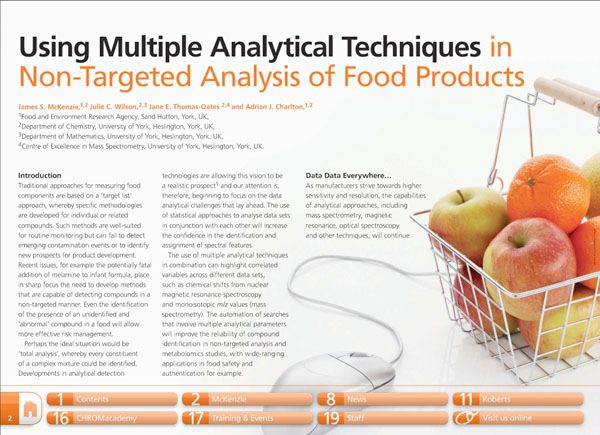Using Multiple Analytical Techniques in Non-Targeted Analysis of Food Products
E-Separation Solutions
Traditional approaches for measuring food components are based on a ?target list? approach, whereby specific methodologies are developed for individual or related compounds. Such methods are well-suited for routine monitoring but can fail to detect emerging contamination events or to identify new prospects for product development.

Traditional approaches for measuring food components are based on a ‘target list’ approach, whereby specific methodologies are developed for individual or related compounds. Such methods are well-suited for routine monitoring but can fail to detect emerging contamination events or to identify new prospects for product development.
New Study Reviews Chromatography Methods for Flavonoid Analysis
April 21st 2025Flavonoids are widely used metabolites that carry out various functions in different industries, such as food and cosmetics. Detecting, separating, and quantifying them in fruit species can be a complicated process.
Analytical Challenges in Measuring Migration from Food Contact Materials
November 2nd 2015Food contact materials contain low molecular weight additives and processing aids which can migrate into foods leading to trace levels of contamination. Food safety is ensured through regulations, comprising compositional controls and migration limits, which present a significant analytical challenge to the food industry to ensure compliance and demonstrate due diligence. Of the various analytical approaches, LC-MS/MS has proved to be an essential tool in monitoring migration of target compounds into foods, and more sophisticated approaches such as LC-high resolution MS (Orbitrap) are being increasingly used for untargeted analysis to monitor non-intentionally added substances. This podcast will provide an overview to this area, illustrated with various applications showing current approaches being employed.

.png&w=3840&q=75)

.png&w=3840&q=75)



.png&w=3840&q=75)



.png&w=3840&q=75)



